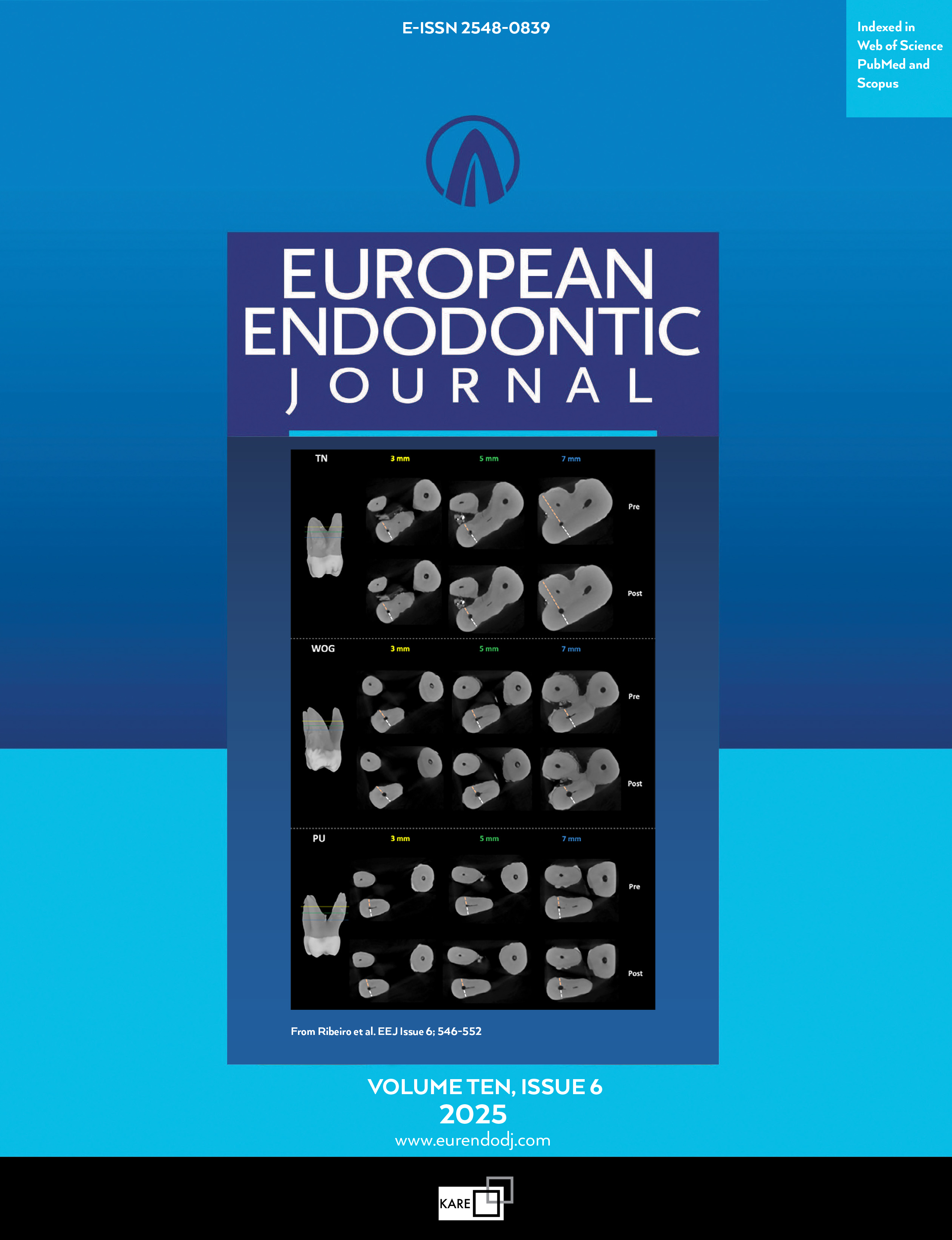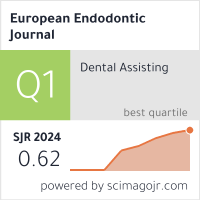Metrics
2024 IMPACT FACTOR
5 year Impact Factor
Eigenfactor Score
2024 CiteScore
Journal Citation Reports
(Clarivate 2025, JIF Rank)
Evaluation of Fracture Resistance and Failure Modes of Maxillary Premolars Restored with Different Coronal Designed Fiber Posts: In Vitro Study
Tuba Gök1, Ege Durdu2, Mehmet Raşit Atik1, Furkan Konuş3, Adem Gök41Department of Endodontics, Fırat University, Faculty of Dentistry, Elazığ, Türkiye2Undergraduate Dental Student, Fırat University, Faculty of Dentistry, Elazığ, Türkiye
3Department of Endodontics, Yozgat Bozok University, Faculty of Dentistry, Yozgat, Türkiye
4Department of Restorative Dentistry, Fırat University, Faculty of Dentistry, Elazığ, Türkiye
Objective: The design and structural properties of fiber posts play a crucial role in the long-term success of endodontically treated teeth by influencing their fracture resistance and failure patterns. This study aimed to evaluate the effect of fiber posts with different coronal designs on fracture resistance and failure mode in endodontically treated maxillary premolars restored with cusp-covering direct overlay restorations.
Methods: Forty-five extracted human maxillary premolar teeth were selected. The 2 mm cusp reducted MOD cavity preparations and root canal treatments were performed. The teeth were divided into three groups (n=15): group 1: standard conical post (SCP) (Exatec Blanco HT-glass fiber post), group 2: cylindrical core post (CCP) (Exatec Blanco HT-glass fiber post) and group 3: control group (no post applied). After the placement of posts, overlay restorations were made with resin composite. The fracture resistance test was applied with a universal testing device and maximum forces were recorded. The failure mode scores were recorded using a dental microscope. The ANOVA test was used for the statistical analysis (p<0.05).
Results: While no significant difference was observed in terms of fracture resistance between SCP and CCP groups (1033.15 N and 981.17 N, respectively), the control group had significantly lower fracture resistance (852.93 N) (p=0.004). The number of restorable failure modes was higher in all groups. The non-restorable failure mode V was higher in CCP and control groups than SCP group.
Conclusion: Different coronal designs of fiber posts showed no significant difference in fracture resistance. Restorable failures were more frequent in the SCP group. (EEJ-2025-02-018)
Keywords: Cusp coverage restoration, endodontic treatment, failure mode, fracture resistance, glass fiber post
Manuscript Language: English
(734 downloaded)



